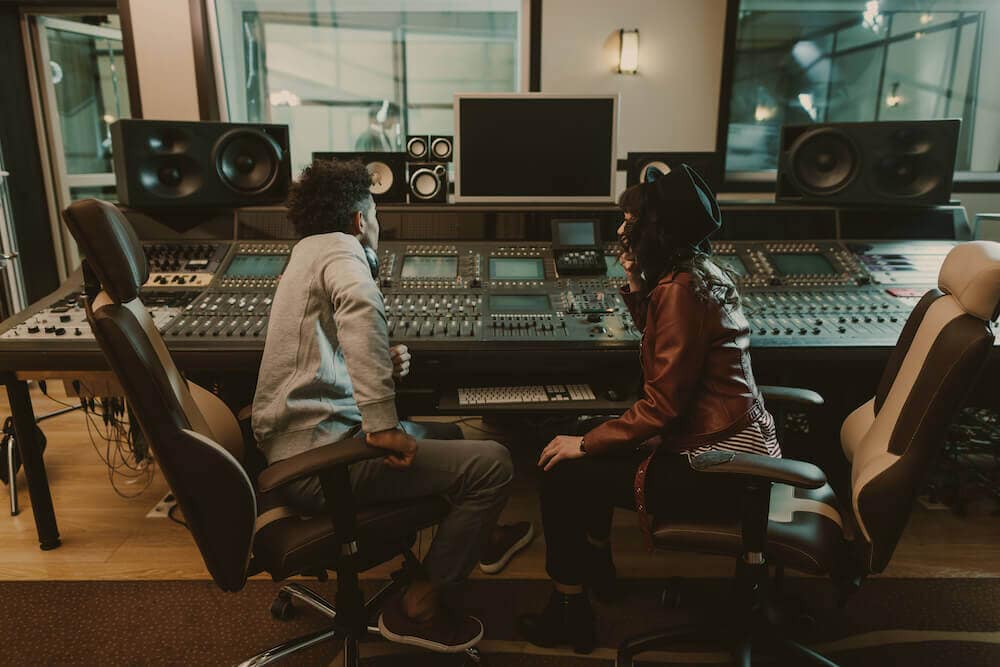by Ron Bates
Intro
There are many blog posts about recording and mixing techniques. However, one thing I don’t see talked about all that much is the thought process behind mixing. There are many variables that make up a great mix, but without having a thorough understanding of what you’re trying to accomplish, you can be grasping at straws and wasting too much time. Let’s break down some basic mixing ideals and questions you can ask yourself to keep your mix on track.
Define Your Expectations
Define your expectations before you start the mix. If you’re mixing for a client, sit down with them and make sure you both have a very clear vision of what you want the end product to be. You will not be satisfied with your mix, if you don’t have any direction. You need to understand why you do or do not like something.

If you don’t take time to understand the song and client, then you could be mixing a song that nobody actually wants. Band references can come in handy for these situations. If you know the client wants a 1960s British Rock sounding track, that’s going to influence almost every decision you make (placement of instruments in the stereo field, panning, overall balance, etc). Having a clear understanding of the song and artist is going to be paramount for keeping your mix on track.
Admit your faults and always be willing to learn
Many mixing decisions can be trial and error, especially when starting out. Just because you were told to “boost 50hz and cut 200hz” on kick drums, doesn’t mean that will always work. The quicker you can move on from something that didn’t work in a certain scenario, you will then start to understand when and where to apply certain mixing techniques. Always be willing to learn and learn from your mixing mistakes. Try to keep an open mind about any so-called “mistakes”. They might be the solution to a later problem.
Why?
Admitting your faults brings me to the biggest question of this blog. WHY?
We are inundated with mix techniques floating around on the internet. So, we usually have producers preaching certain uses of compressors and EQ as a ubiquitous rule. In order to make sense of the information overload created by the never-ending list of seemingly rigid rules, I would like to challenge you to ask yourself one question: “why?” When I was in audio school, we were taught about all aspects of audio engineering including the use of EQs, compressors, consoles, and signal flow. However, there’s a big distinction between knowing about a compressor compared to knowing how to effectively use it.
Towards the end of school, I started to understand WHY people were EQing a certain way or compressing a certain amount. So many people say things like “to sound like * insert artist here *, do this”. Typically, that won’t work as well as one might think. You need to understand your source. While there might be sonic elements you’re trying to take inspiration from, it’s very important to realize that mixing is all about problem-solving and melding sonic elements together. You need to be thinking of the cause and effect of each step.
For example, parallel drum bus compression might make the drums more exciting. But in return, it could make the cymbals too harsh or overpowering. Understanding your tools and having a reason for each decision will allow you to improve your mixes and work more efficiently.
Identify a problem
Identify a problem, and then figure out a solution. It’s very easy to get caught up in the minute details of a mix. Having a problem in mind not only allows you to stay focused but also helps you build mixing efficiency. The quicker you can identify a problem and a solution, the more you can mix. Once you get all the “big picture” problems solved and the mix is starting to come together, you can start getting more creative. After solving the biggest mix problems first, I’m left with a solid starting place to really polish and personalize it.
It’s important to remember that problems and solutions can come in all shapes and sizes. One thing to always keep in mind when problem-solving is that the simplest and quickest solution might be the best for that situation.
For instance, if you find the bass guitar to be overwhelming, you could EQ it, multiband compress it, or simply turn it down. While I can’t promise that turning something up or down is always going to be the end all solution, recognizing all possible solutions can allow you to work faster and keep the creativity alive.
Work faster and move on
While I know working faster might sound almost careless, it can be a very effective strategy when combined with all the other above ideals. Working fast and sometimes setting time limits for yourself will allow you to focus on an issue with a fresh set of ears. After mixing for multiple hours, it becomes very easy to lose sight of what actually needs to be addressed in your mix. When you first start mixing for the day, your ears are fresh and will pinpoint sonic issues or characteristics that you’re not a fan of. By quickly addressing them, you can hopefully move on to the next task and finish your mix sooner.
As with anything, practice makes perfect. What might be considered fast for some, might be slow for others. It’s important to build up your mixing stamina and improve at your own pace.
And lastly, don’t over do it and kill your ears. Remember that taking breaks when feeling fatigued is very healthy and your ears will thank you.
Well, thanks for reading this one. Thanks for having me, Sonimus. I hope this brings you some newfound inspiration and helps you improve your mixes. Happy mixing, everyone!







In two words: fabu lous!